Since the very beginning of quantum physics, a hundred years ago, it has been known that all particles in the universe fall into two categories: fermions and bosons. For instance, the protons found in atomic nuclei are fermions, while bosons include photons — which are particles of light — as well as the BroutEnglert-Higgs boson, for which François Englert, a professor at ULB, was awarded a Nobel Prize in Physics in 2013.
Bosons — especially photons — have a natural tendency to clump together. One of the most remarkable experiments that demonstrated photons’ tendency to coalesce was conducted in 1987, when three physicists identified an effect that was since named after them: the Hong-Ou-Mandel effect. If two photons are sent simultaneously, each towards a different side of a beam splitter — a sort of semitransparent mirror — one could expect that each photon will be either reflected or transmitted.
Logically, photons should sometimes be detected on opposite sides of this mirror, which would happen if both are reflected or if both are transmitted. However, the experiment has shown that this never actually happens: the two photons always end up on the same side of the mirror, as though they ‘preferred’ sticking together! In an article published recently in US journal Proceedings of the National Academy of Sciences, Nicolas Cerf — a professor at the Centre for Quantum Information and Communication (École Polytechnique de Bruxelles) — and his former PhD student Michael Jabbour — now a postdoctoral researcher at the University of Cambridge — describe how they identified another way in which photons manifest their tendency to stay together. Instead of a semi-transparent mirror, the researchers used an optical amplifier, called an active component because it produces new photons. They were able to demonstrate the existence of an effect similar to the Hong-Ou-Mandel effect, but which in this case captures a new form of quantum interference.
Quantum physics tells us that the Hong-Ou-Mandel effect is a consequence of the interference phenomenon, coupled with the fact that both photons are absolutely identical. This means it is impossible to distinguish the trajectory in which both photons were reflected off the mirror on the one hand, and the trajectory in which both were transmitted through the mirror on the other hand; it is fundamentally impossible to tell the photons apart. The remarkable consequence of this is that both trajectories cancel each other out! As a result, the two photons are never observed on the two opposite sides of the mirror. This property of photons is quite elusive: if they were tiny balls, identical in every way, both of these trajectories could very well be observed. As is often the case, quantum physics is at odds with our classical intuition.
The two researchers from ULB and the University of Cambridge have demonstrated that the impossibility to differentiate the photons emitted by an optical amplifier produces an effect that may be even more surprising. Fundamentally, the interference that occurs on a semi-transparent mirror stems from the fact that if we imagine switching the two photons on either side of the mirror, the resulting configuration is exactly identical. With an optical amplifier, on the other hand, the effect identified by Cerf and Jabbour must be understood by looking at photon exchanges not through space, but through time.
When two photons are sent into an optical amplifier, they can simply pass through unaffected. However, an optical amplifier can also produce (or destroy) a pair of twin photons: so another possibility is that both photons are eliminated and a new pair is created. In principle, it should be possible to tell which scenario has occurred based on whether the two photons exiting the optical amplifier are identical to those that were sent in. If it were possible to tell the pairs of photons apart, then the trajectories would be different and there would be no quantum effect. However, the researchers have found that the fundamental impossibility of telling photons apart in time (in other words, it is impossible to know whether they have been replaced inside the optical amplifier) completely eliminates the possibility itself of observing a pair of photons exiting the amplifier. This means the researchers have indeed identified a quantum interference phenomenon that occurs through time. Hopefully, an experiment will eventually confirm this fascinating prediction!
Reference: “Two-boson quantum interference in time” by Nicolas J. Cerf and Michael G. Jabbour, 11 December 2020, Proceedings of the National Academy of Sciences.
DOI: 10.1073/pnas.2010827117

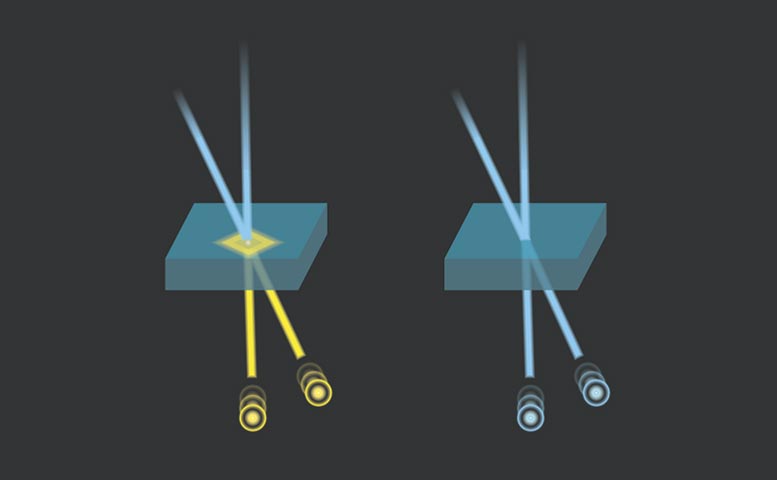
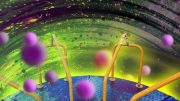
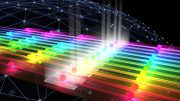
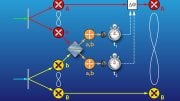
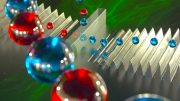
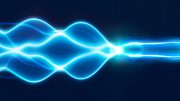
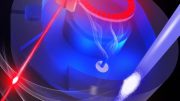
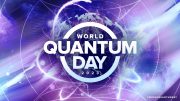
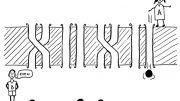
Great read, thanks! Did you know the mayans could predict your future by your date of birth? My reading was SCARY accurate and honestly life changing…you can learn more about getting a free reading here:
https://mayancosmicreading.weebly.com/
Keep up the great content! 🙂
It’s era of quantum mechanics or physics
This sentence is confusing to me:
Logically, photons should sometimes be detected on opposite sides of this mirror, which would happen if both are reflected or if both are transmitted.
It seems to me the photons would NOT be detected on opposite sides if both are reflected or if both are transmitted. They would be on the same side if both are reflected or transmitted! Perhaps there has been an editing error?
William: I stumbled over the same issue/problem…the ‘logical’ assumption would be that — some of the time — one photon of a photon pair would be reflected while the other photon partner is transmitted (i.e., passes through the splitter), etc. But this never happens, etc., etc.
This isn’t novel. It’s just saying “coupled particles don’t decouple when disturbed”. This isn’t a form of quantum interference, it’s a lack of it. Or, perhaps just wishful thinking that non-novel interference would lead to amazing discovery. It did not. Great candidate for repetition by students.
Not an error since the photons are sent to opposite sides of the splitter. So if both do the same thing they remain on opposite sides.
meme of the moment- “…photons are absolutely identical. This means it is impossible to distinguish the trajectory in which both photons were reflected off the mirror on the one hand, and the trajectory in which both were transmitted through the mirror on the other hand; it is fundamentally impossible to tell the photons apart…….”
https://www.instagram.com/chemicalgorithms/
Two line segments were sitting in a bar having a drink. One said to the other “Have you heard about that new theory of 3-dimentional triangles? They call them pyramids…”
“I don’t know about that kinda stuff. It’s over my head.”
c^3st<=d-x
c^3st<=d-x
I followed the Arecibo story with growing disbelief, horror c finally anger with reasons behind the tragic distruction of this once, crown jewel,of scientific infrastructure c serendipitous, innovative instruments of not just the USA’s but of humankind’s unquenchable quest to discovering,c defining our common reality, including our place in it, a bit more with each new step but increasing time c again,sometimes all unknowingly at the , our capabilities c skills to actually, increasingly manipulate to our advantage versatility, security c/or move w/I more c more easily…but,concomitantly…sadly, destructive unleashings…its all well a good to talk c write about the neccessity (which has long been self-evident to many) to seek a measure of existential survival through an extraterrestrial strategy, as at least one Floridian media outlet has done recently, before the reverberating ‘aftershocks’ c the dust settles in the shadows cast by the ruble of it’s destruction NOT, just in the scientific, intellectual c cultural landscapes of Puerto Rico c USA but a truly planetary girdling trail of destruction because we MUST…Must, must!not just have amazing, inspiring. superbly effective c versatile Arecibo’s,if we are to even try, to practically approximate such an extraterrestrial strategy there…M U S T BE THE FORESIGHT C THE WORLD WIDE WILL/COMMUNITY(To start…right HERE(!!!), in Puerto Rico, Florida, Ohio, the USA,TO NOT simply rebuild…1954, which even at that,far out shown the science c engineering expectations of it’s ‘creators’ but built, c more than one perhapse…
with an Odin’s eye for the future…we have now…alas,experienced our own blinding. What what knowledge/lessons….will be acknowledged with humility and the rebuilding, expanding,c truly maintaining of such instruments c more occur.
….B4(!!!) OUR extinction event looms….MY, GOD PEOPLE…do your really want to experience a notification on your device….of another… Chelyabinsk!?!..or the worst case scenario, not their experience but the slightly different entry angle case….resulting in a nuclear fission or thermal nuclear like explosion minus the nuclear radiation…PERHAPSE..A….MILLON SOULS C THEIR….
ENTIRE ENVIRONS VAPORIZED in millisecond c maybe this time RIGHT OVER YOUR…HEADS!
I am not sure who your intended audience was. I am frustrated because I want to understand what this new research shows, but I did not understand your article. The author seems to have brain dumped without an actual intention to connect. I would read a rewrite.
…”Since the very beginning of quantum physics, a hundred years ago, it has been known that all particles in the universe fall into two categories: fermions and bosons”…
… Okay, but why there are: fermions and bosons, in the first place, after all?… Why is there more of the matter than anti matter in the very first place, …